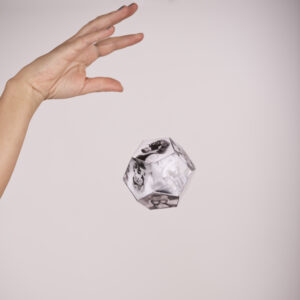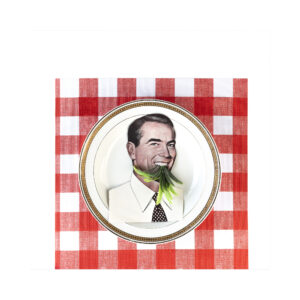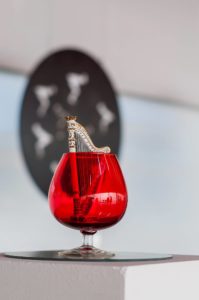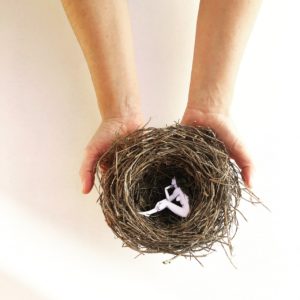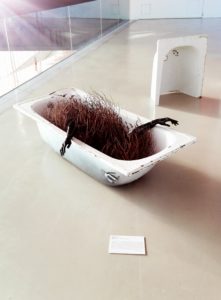poema - objeto

En la mezcla de poesía y artes plásticas se desarrollan infinitas posibilidades creativas e interpretativas, es ahí donde se apela tanto a la sensibilidad como a la intuición del espectador. Una auténtica épica de lo cotidiano si se trata de objetos.
A Miriam Martínez le surge esta inquietud a raíz de la observación de nuestra más inmediata realidad, en la que convivimos con multitud de objetos que acaban convirtiéndose en cosas inservibles. Se trata de alguna manera, de volver a dotar de sentido a esos objetos, que sacados de su contexto utilitario, parecen convertirse en despojos de un mundo materialista que basa su economía en el consumo desmesurado y en la breve caducidad de lo adquirido. Se da cabida al nihilismo, como vía de escape ante una realidad deprimente. A la manera de Neruda en sus Odas elementales, o Duchamp, en el Objeto encontrado, dando una dignificación artística a estas pequeñas cosas. Podríamos encontrar ciertas referencias al poeta Joan Brossa, Chema Madoz o los artistas Antonio Pérez y Pilar Albarracín, que también se vieron seducidos por las múltiples metáforas visuales que de lo cotidiano se puede experimentar.
Los objetos, pues, se convierten en símbolos, en conceptos que se materializan, como es ya signo de identidad en las obras de Miriam Martínez Abellán, en múltiples elementos reciclados, acompañados de imágenes y distintos signos, que configuran una obra trabajada de manera totalmente manual.
El ‘objeto’ se eleva a la categoría de código, fetiche y razón de ser de una visión particular y mágica que protagoniza cada nueva composición.
Fernando Cuadrado Mulero

Idea brillante

Poem-object
In the mixture of poetry and plastic arts infinite creative and interpretative possibilities are developed, it is there where the sensibility as well as the intuition of the spectator is appealed. An authentic epic of everyday life when it comes to objects.
Miriam Martínez has this restlessness as a result of the observation of our most immediate reality, in which we live with a multitude of objects that end up becoming useless things. In some way, it is a question of giving meaning to those objects that, taken out of their utilitarian context, seem to become the remains of a materialistic world that bases its economy on disproportionate consumption and on the brief expiration of what has been acquired. There is room for nihilism, as an escape route in the face of a depressing reality. In the manner of Neruda in his Elementary Odes, or Duchamp, in the Found Object, giving artistic dignity to these small things. We could find certain references to the poet Joan Brossa, Chema Madoz or the artists Antonio Pérez and Pilar Albarracín, who were also seduced by the multiple visual metaphors of everyday life.
Objects, then, become symbols, concepts that materialize, as is already a sign of identity in the works of Miriam Martínez Abellán, in multiple recycled elements, accompanied by images and different signs, which make up a work worked in a totally hand made way.
The ‘object’ is elevated to the category of code, fetish and raison d’être of a particular and magical vision that plays the leading role in each new composition.
Fernando Cuadrado Mulero

Bright idea
El agua que baña las entrañas
The water that bathes the entrails
Instalación.Bañera, alambre, corsé, cartón EB, acrílico y plástico.Medidas variables.
2018/El Batel de Cartagena (Murcia, España).
“Siempre pensó que bajo el agua de la bañera otro mundo se agitaba tembloroso. Cuando sumergía su cuerpo sentía cómo parte de él cobraba vida propia y se mezclaba con sombras y reflejos que habitaban el agua. Su silueta, nítida y sensual en la superficie, perdía poco a poco el perfil real para convertirse en una sustancia voluble e indefinida al cruzar la frontera. Y en su espíritu, una mezcla de placer y temor. El deleite de sentir el tacto cálido de un líquido que la cubría casi con impudicia; el miedo al desaparecer en ese engañoso fluido que metamorfoseaba su esencia. Siempre dudaba de que el rostro que se dibujaba sobre las ondas de estaño fuera un reflejo, pensaba que era el semblante de la otra que se acercaba a observarla con descaro, invitándola a seguirla a través de un laberinto de sumideros y tuberías. ¿Y si ahí vivieran ocultos todos sus miedos y todas sus dudas flotaran, como amenazadoras medusas, en ese misterioso mar doméstico? ¿Y si los seres de esos dominios, turbios e imprecisos a los sentidos, entraran en su baño, en su cuerpo y en su alma, del mismo modo que ella traspasaba esa cortina líquida que la dejaba a solas consigo misma?”
«She always thought that under the bathtub water another world was shaking. When he submerged his body he felt part of it take on a life of its own and mix with the shadows and reflections that inhabited the water. Her silhouette, clear and sensual on the surface, gradually lost the real profile to become a voluble and indefinite substance when crossing the border. And in his spirit, a mixture of pleasure and fear. The delight of feeling the warm touch of a liquid that covered her almost with impudence; the fear of disappearing into that deceitful fluid that metamorphosed her essence. He always doubted that the face that was drawn on the tin waves was a reflection, he thought that it was the countenance of the other that approached to observe it with audacity, inviting it to follow it through a labyrinth of sumps and pipes. What if all her fears and doubts were hidden there and floated like threatening jellyfish in that mysterious domestic sea? What if the beings of those domains, cloudy and imprecise to the senses, entered her bath, her body and her soul, in the same way that she went through that liquid curtain that left her alone with herself»?
Fernando Cuadrado Mulero

